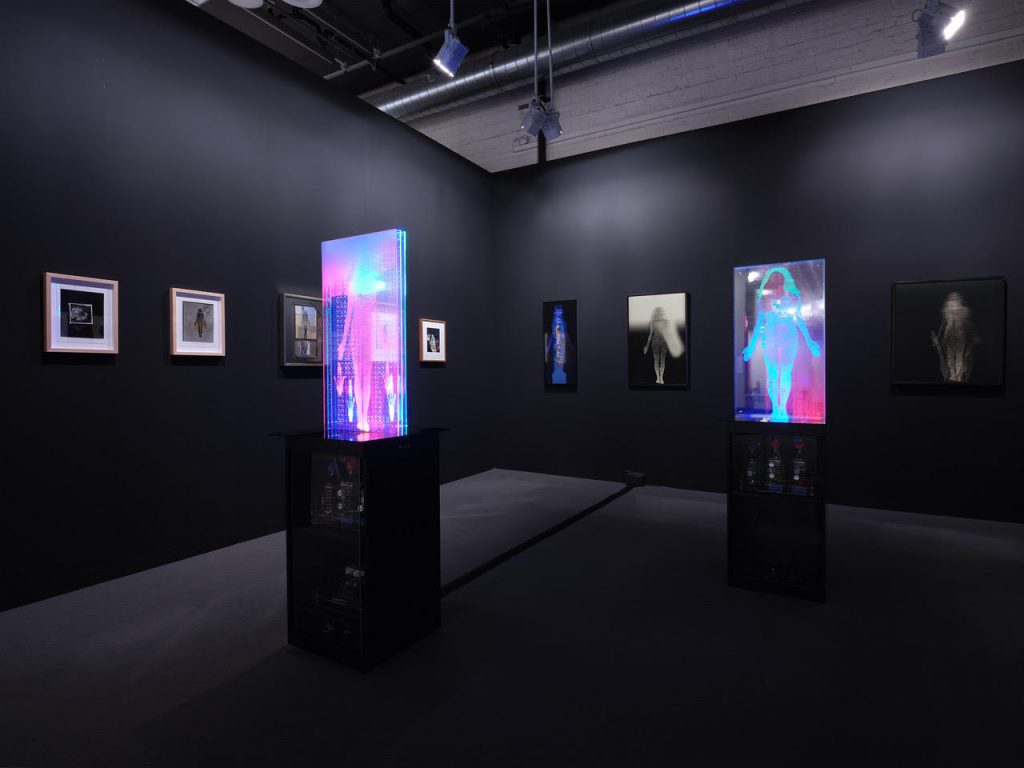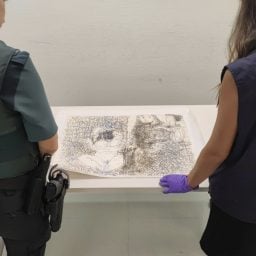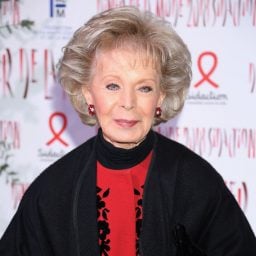While deals and reunions were overflowing in the aisles of Art Basel, small-c conservatism defined much of the work on offer inside the industry’s most important summer art fair. Still, there were wonders to be found amid the throngs if you looked closely, patiently, and widely.
Below are five works that left an impression sure to last long after the fair closes this Sunday.
Mark Leckey
Carry Me Into the Wilderness (2022)
Cabinet, London
Price Undisclosed
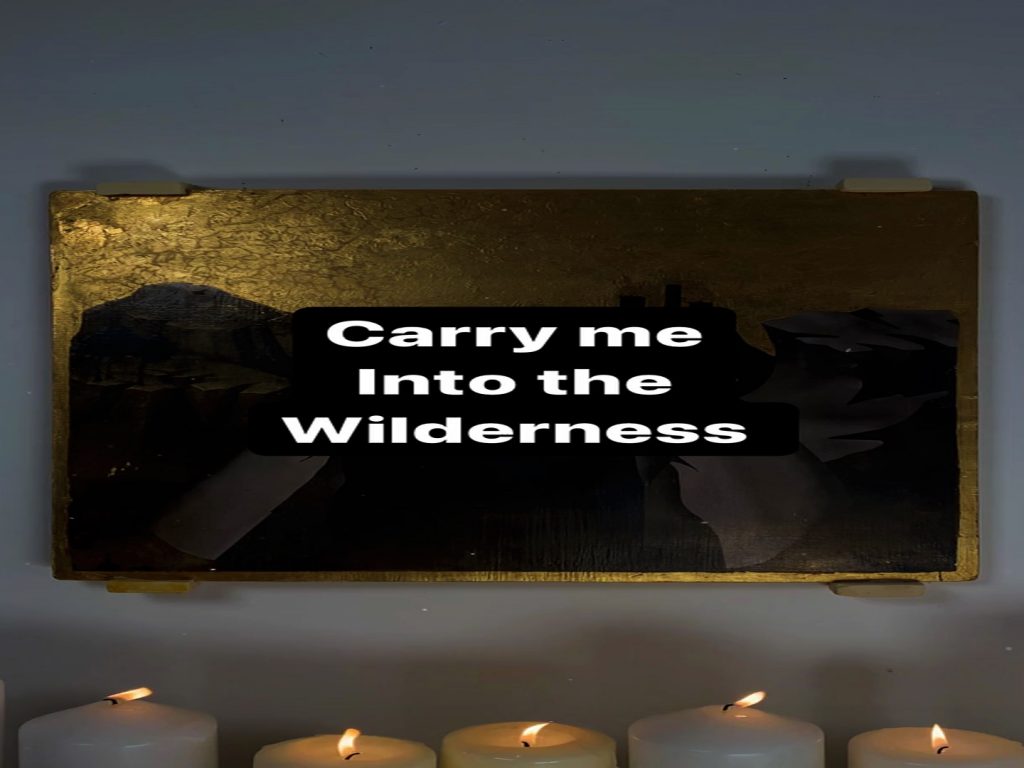
Mark Leckey, Carry Me Into the Wilderness (2022). Courtesy of Cabinet, London.
It’s a tall order to pack palpable emotion, a strong concept, and an enduring wave of pure sensory pleasure into a roughly six-minute video piece anywhere, let alone at an art fair. But Mark Leckey pulls off the trifecta with Carry Me Into the Wilderness.
The work’s genesis was a headphones-on, music-up walk the artist took in Alexandra Palace after London’s COVID lockdown ended, a transcendent experience during which Leckey claims he felt “relieved of the numbness of the past two years, when all that there was were windows and looking out and looking in.”
Carry Me Into the Wilderness translates his moment of joyous overwhelm into something like a sainted music video. The work’s twin jumping-off points are a voice memo Leckey recorded in the midst of his quasi-rapture, and a copy of an icon painting depicting a dark cave and a distant monastery set amid desert cliffs under a gold-leaf sky. What extends from this base is a simulated first-person journey into the painting. Leckey visualizes it using video footage, 3D-modeling software, and camera filters and captions cribbed from TikTok; he soundtracks it with a synth-kissed ambient score powered by his Auto-Tuned voice memo from the park. The end result works as both a personal journey and an expression of Leckey’s interest in icons not as representations but rather as direct portals to the divine.
Mire Lee
Endless House: Harlequin Baby (2022)
Tina Kim Gallery
$70,000
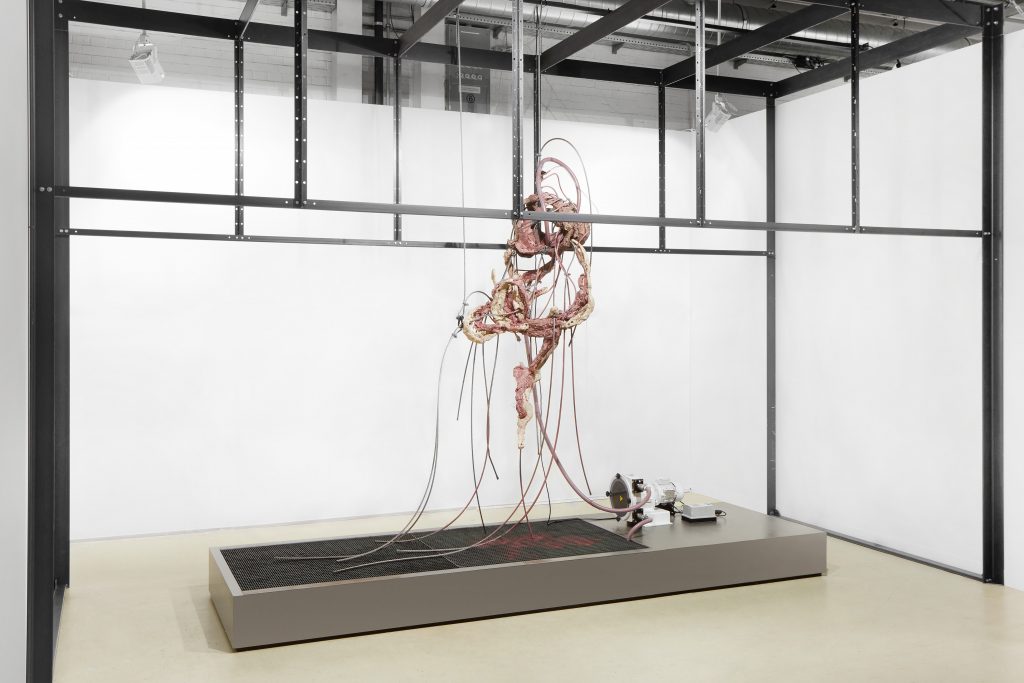
Mire Lee, Endless House: Harlequin Baby (2022). Photo: Sebastiano Pellion Di Persano. Courtesy of the artist and Tina Kim Gallery.
A sister piece to Mire Lee’s even more monumental contribution to Cecelia Alemani’s Venice Biennale, Endless House: Harlequin Baby is in the business of squirming along borderlines: between mechanical and organic, temporal and permanent, productive and consumptive. Suspended from a frame made of 2,000 kilos of steel, the twisted mass of fired clay is continuously bathed in streams of mauve glaze, which are then recycled from a trough below through a series of tubes acting as a motorized circulatory system. The work flirts with the industrial-strength body horror synonymous with the films of David Cronenberg or, more recently, Julia Ducournau’s Titane.
Yet Lee coyly prevents the piece from tipping over into the grotesque. The clay forms allude to bone but clearly are not; the glaze calls blood and bile to mind, then dismisses the thought. The sound of glaze sliding across, raining down, and being sucked back skyward could be from an operating room, a mechanic’s garage, or a children’s science experiment. Overall, Endless House: Harlequin Baby mesmerizes by mutating familiar reference points into a concatenation of sights, sounds, and ideas that keeps slithering forever just beyond our reach.
Lynn Hershman Leeson
Twisted Gravity: Thermograph (2021)
Altman Siegel and Bridget Donahue
$120,000
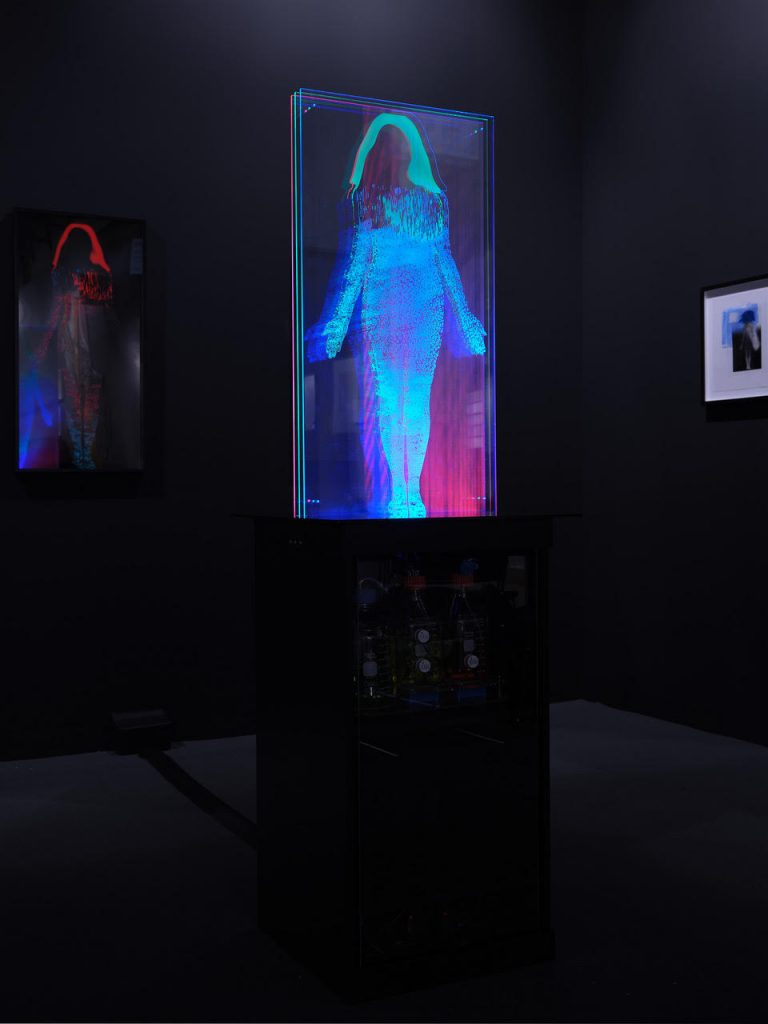
Lynn Hershman Leeson, Twisted Gravity: Thermograph (2021). Courtesy of Altman Siegel, San Francisco, and Bridget Donahue, New York.
Lynn Hershman Leeson has been working at the forefront of technology and feminism for nearly six decades. In the late 1960s, her practice began incorporating a motif called the water woman, a silhouette of Hershman Leeson’s own body broken into water droplets. The image alludes to the phenomenon of women “evaporating” from too many spaces in public life (history books, executive positions, museum collections) due to external forces.
At the center of Altman Siegel and Bridget Donahue’s collaborative booth of “Water Women” works are two recent installations that leverage the Aquapulse, a filtration system being developed for personal use in low-income countries where access to clean water is scarce. In both works, Hershman Leeson has connected Aquapulse prototypes to a small computer and bottles filled with water dyed to simulate harmful bacteria. (Swiss regulations prevented the importing of actual microbes.) As the filter purifies each bottle of colored water, the computer progressively intensifies the corresponding colored lights to illuminate one of three sheets of Plexiglas etched with a part of the Water Woman imagery.
While the counterpart installation has been programmed to stay at maximum brightness, Twisted Gravity: Thermograph runs a simulation that continuously walks the lights up and down the intensity scale step by step. It makes for a more visceral display of how Hershman Leeson is harnessing another innovation to break boundaries of practical and aesthetic import alike. (The work was still available on Thursday afternoon but is set to travel to multiple museum exhibitions once the fair ends, starting with the Museion in Bolzano, Italy.)
Arthur Jafa
Monster (1988)
Gladstone Gallery
$125,000
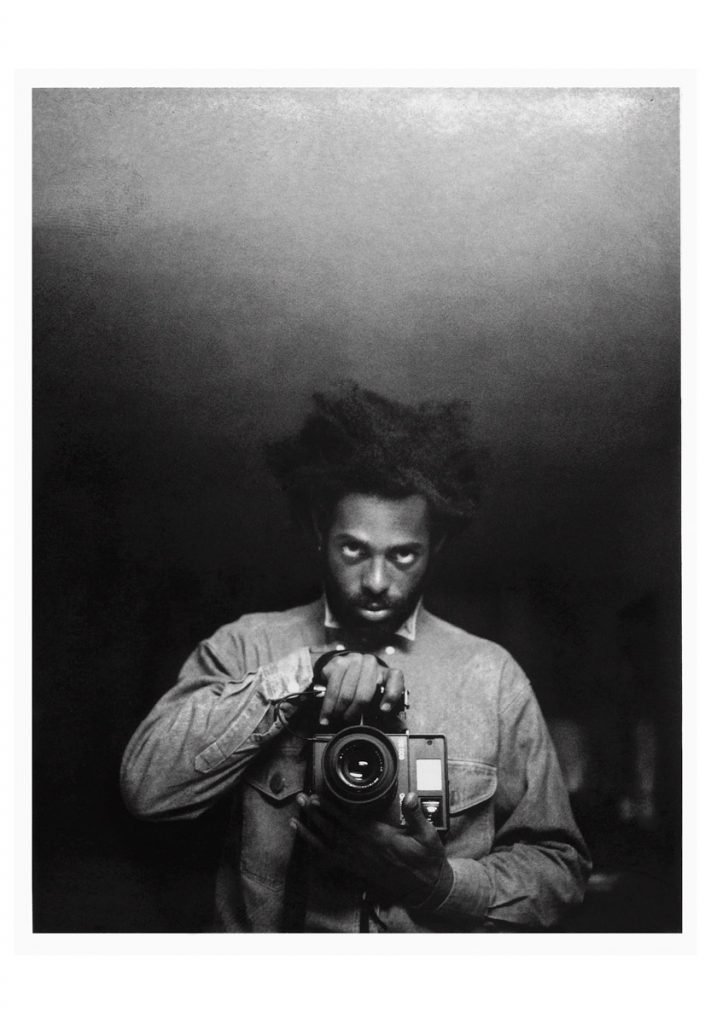
Arthur Jafa, Monster (1988). © Arthur Jafa, Courtesy the artist and Gladstone Gallery.
This work was the only one on the fair’s ground floor that stopped me in my tracks on opening day. The five-and-a-half-by-four-foot self-portrait captures Jafa, now firmly ensconced as a celebrated elder statesman, back when he was a young maverick rising through the film- and art-making scenes. Shot the year the artist turned just 28 years old, the photo establishes a theme that has driven Jafa to craft some of the most memorable works of the 21st century: the white gaze and its dominance over photographic and cinematic production. To Jafa, a recurring question has been whether even the most talented, self-aware Black artist can overcome the camera’s legacy as an instrument of white soft power. More than three decades after he completed Monster, Jafa’s bravura output argues that the answer is yes. The defiance, commitment, and skill it took to deliver that answer was on full view in Monster (which sold on opening day), as Jafa turns the power of his own vision back on the viewer.
Sarah Meyohas
Interference #8 (2022)
Marianne Boesky Gallery
$295,000
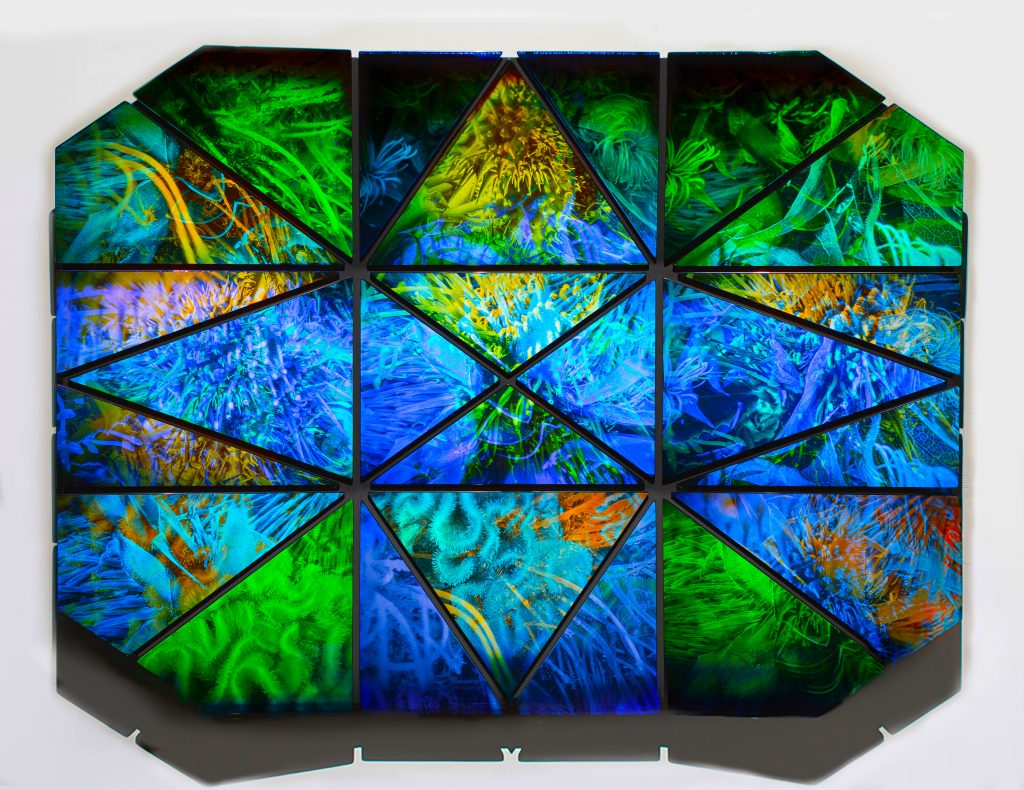
Sarah Meyohas, Interference #8 (2022). Courtesy of the artist and Marianne Boesky Gallery. Photo: Alex Gray. © Sarah Meyohas.
Although Sarah Meyohas’s best-known works have been digital-first and (often) crypto-focused, her latest studio breakthrough is analog from start to finish. A marvel of engineering and fabrication, Interference #8 is a cluster of hologram shards fused into a gently cupped array whose perimeter peels off the wall, almost like a flower mid-bloom.
The reference point isn’t accidental. Embedded in each triangular fragment is close-up imagery of plant matter, which the artist shot on film and transferred into glass courtesy of a monthslong research-and-development process.
Thankfully, viewers don’t need to understand the arcane, painstaking science to bask in the literal glow of the end result. Brought to life by a single overhead lamp, the flora in Meyohas’s holograms feels alive in a way that cannot be relayed in still digital images: simultaneously vivid and ethereal, as the stems, leaves, and petals captured in the few elemental colors of holography induce the illusion of dimensionality and motion through the practical magic of method and materials. No surprise, then, that the piece sold on the fair’s first VIP day.
